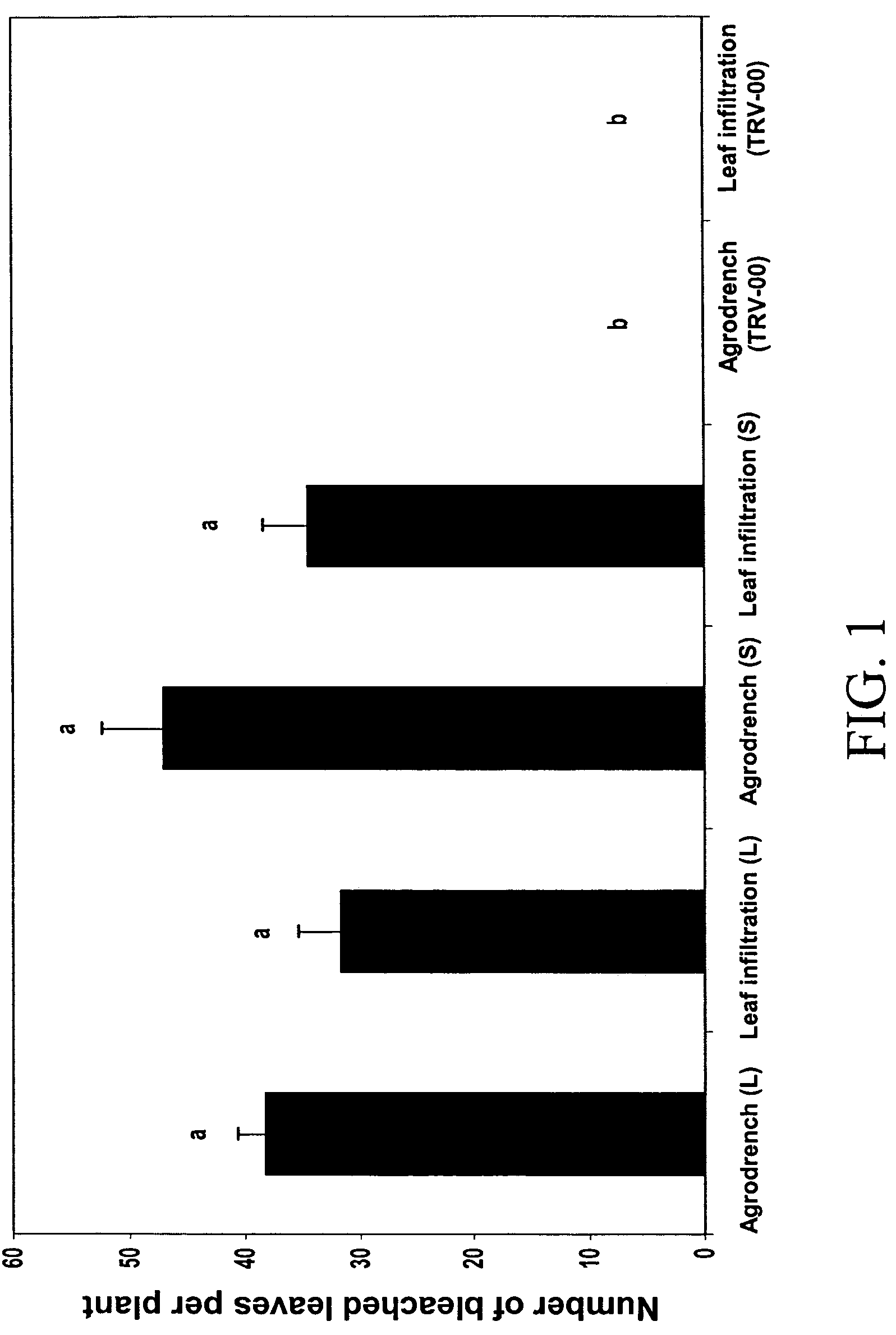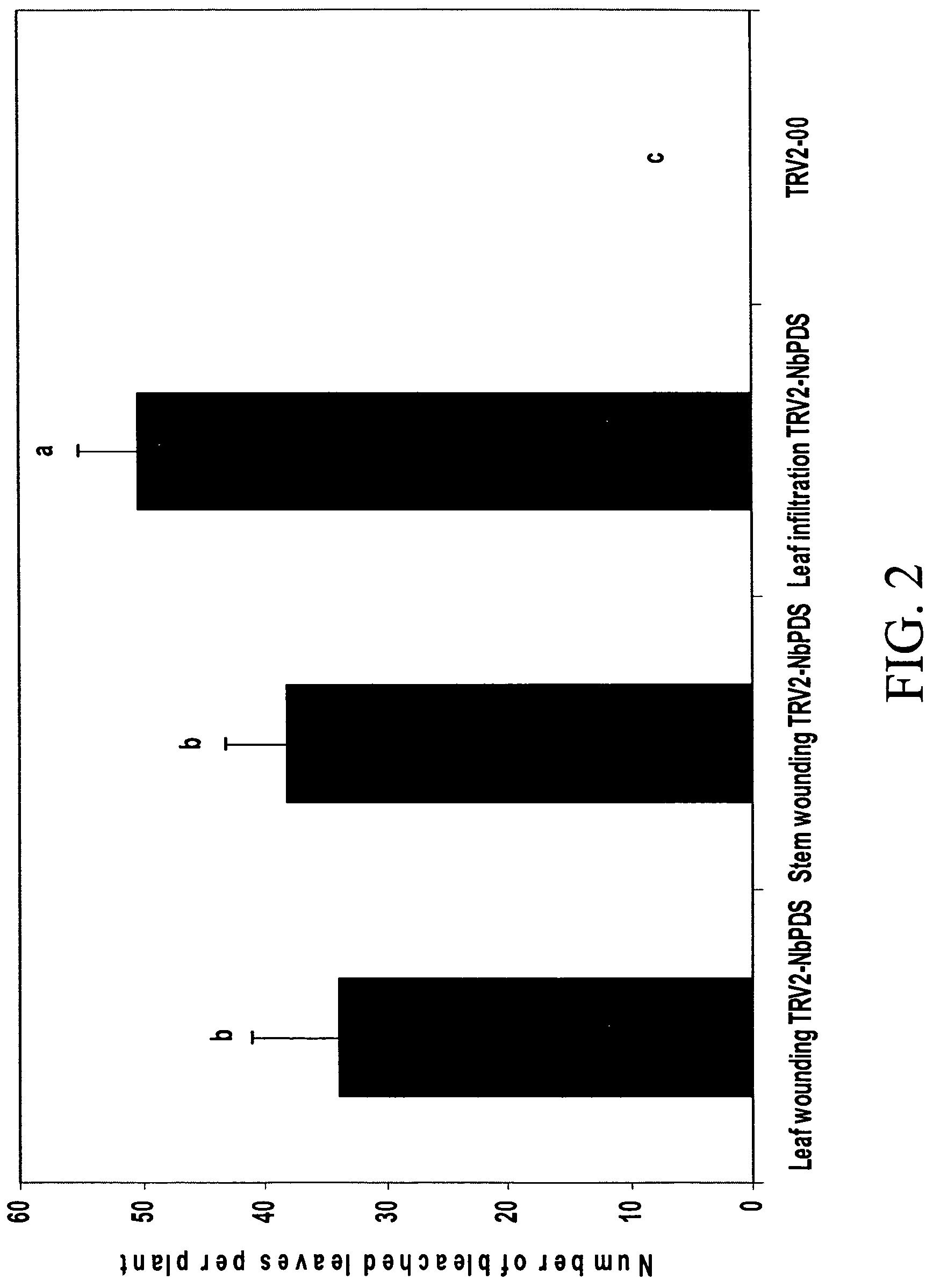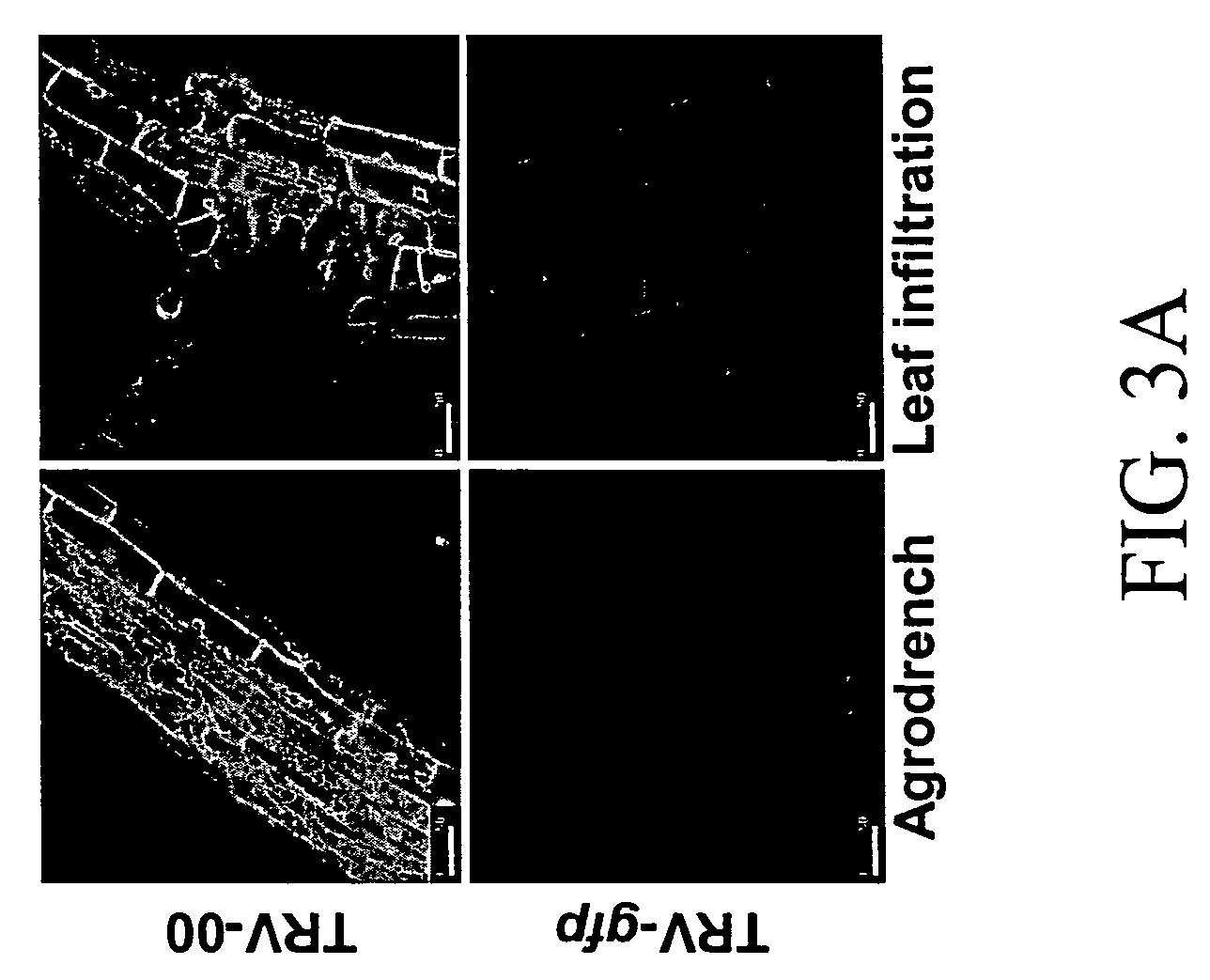Root agroinoculation method for virus induced gene silencing
a virus and gene silencing technology, applied in the field of molecular biology, can solve the problems of troublesome delivery of vigs vectors to plants of a number of different species in particular, a large amount of time to obtain, so as to inhibit the expression of a plant gene and alter the phenotyp
- Summary
- Abstract
- Description
- Claims
- Application Information
AI Technical Summary
Benefits of technology
Problems solved by technology
Method used
Image
Examples
example 1
Materials and Methods
A. Plant Material and Growth Conditions
[0046]Nicotiana benthamiana (both wild-type and 16C transgenic plants expressing GFP), tomato (Lycopersicon esculentum cvs. Rutgers and microtom), bell pepper (Capsicum annum cv. Marengo), tobacco (Nicotiana tabacum cv. Xanthi nc), potato (Solanum tuberosum cv. Catalina), Eggplant (Solanum melongena cv. Louisiana Long Green), and Petunia (Petunia hybrida cv. Freedom Red Star) were used in the experiments listed in below examples. Seeds were germinated in flats with a soil-less potting mixture, BM7 (Berger Co. Quebec, Canada). Two-week-old seedlings were transplanted to 10 cm diameter round pots, containing BM7, with one plant per pot. Fertilizer (20-10-20) along with soluble trace element mix (The Scotts Co. Marysville, Ohio) was applied with water. Greenhouse conditions were kept at 23±3 and 70% humidity under 12 h light. 1-3 week old plants were used for silencing experiments. To obtain sterile N. benthamiana plants, seed...
example 2
Agrodrench is an Effective Agroinoculation Method for VIGS in N. benthamiana
[0054]Leaf infiltration methods of inoculation have previously been used for VIGS experiments (Lu et al., 2003a). However, while the leaf infiltration method works efficiently in N. benthamiana, a popularly used plant for VIGS experiments, it can be a laborious process for large scale VIGS experiments. The inventors thus developed a simple and efficient method of agroinoculation involving, in one embodiment, drenching the plant rhizosphere (crown part of plant) with Agrobacterium tumefaciens containing the viral vector within the T-DNA of a binary vector. The Tobacco rattle virus (TRV; bipartite RNA virus; TRV-RNA1 [TRV1] and TRV-RNA2 [TRV2]) was used in certain embodiments of the present invention as a VIGS vector. It has been demonstrated that a TRV based vectors can be used for VIGS in both N. benthamiana and a miniature tomato cultivar, referred to as Micro-tom (Ratcliff et al., 2001; Liu et al., 2002a;...
example 3
Agrodrench is More Effective than the Leaf Infiltration Method of Agroinoculation for VIGS in Roots
[0058]VIGS is popularly used to transiently knockout genes that show a characteristic phenotype on foliar area (Lu et al., 2003b; Burger et al., 2003; Yoshioka et al., 2003; Abbink et al., 2002; Liu et al., 2002b; Ekengren et al., 2003). TRV-based VIGS was recently shown to be effective in silencing genes in plant roots (Saedler and Baldwin, 2004). TRV is a soil-borne virus transmitted by nematodes and accumulates in high titer in the root system (MacFarlane and Popovich 2000). The inventors hypothesized that root infection with TRV-VIGS vectors would be more effective in silencing genes in roots.
[0059]The leaf infiltration and agrodrench methods of agroinoculation were compared to determine the efficacy of VIGS in plant roots by using green fluorescent protein (GFP), PDS and Actin as indicator genes. NbPDS was PCR amplified from cDNA synthesized from N. benthamiana leaf tissue and clo...
PUM
| Property | Measurement | Unit |
|---|---|---|
| temperature | aaaaa | aaaaa |
| temperature | aaaaa | aaaaa |
| diameter | aaaaa | aaaaa |
Abstract
Description
Claims
Application Information
 Login to View More
Login to View More - R&D
- Intellectual Property
- Life Sciences
- Materials
- Tech Scout
- Unparalleled Data Quality
- Higher Quality Content
- 60% Fewer Hallucinations
Browse by: Latest US Patents, China's latest patents, Technical Efficacy Thesaurus, Application Domain, Technology Topic, Popular Technical Reports.
© 2025 PatSnap. All rights reserved.Legal|Privacy policy|Modern Slavery Act Transparency Statement|Sitemap|About US| Contact US: help@patsnap.com



